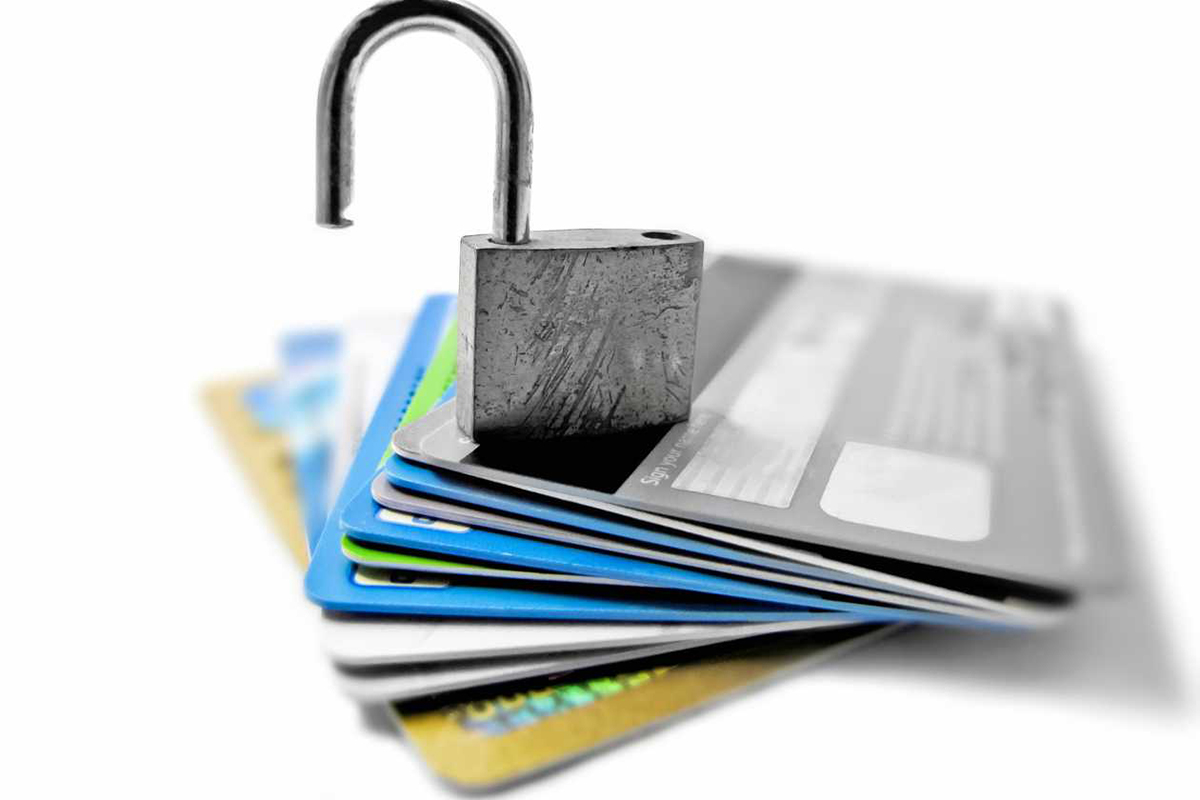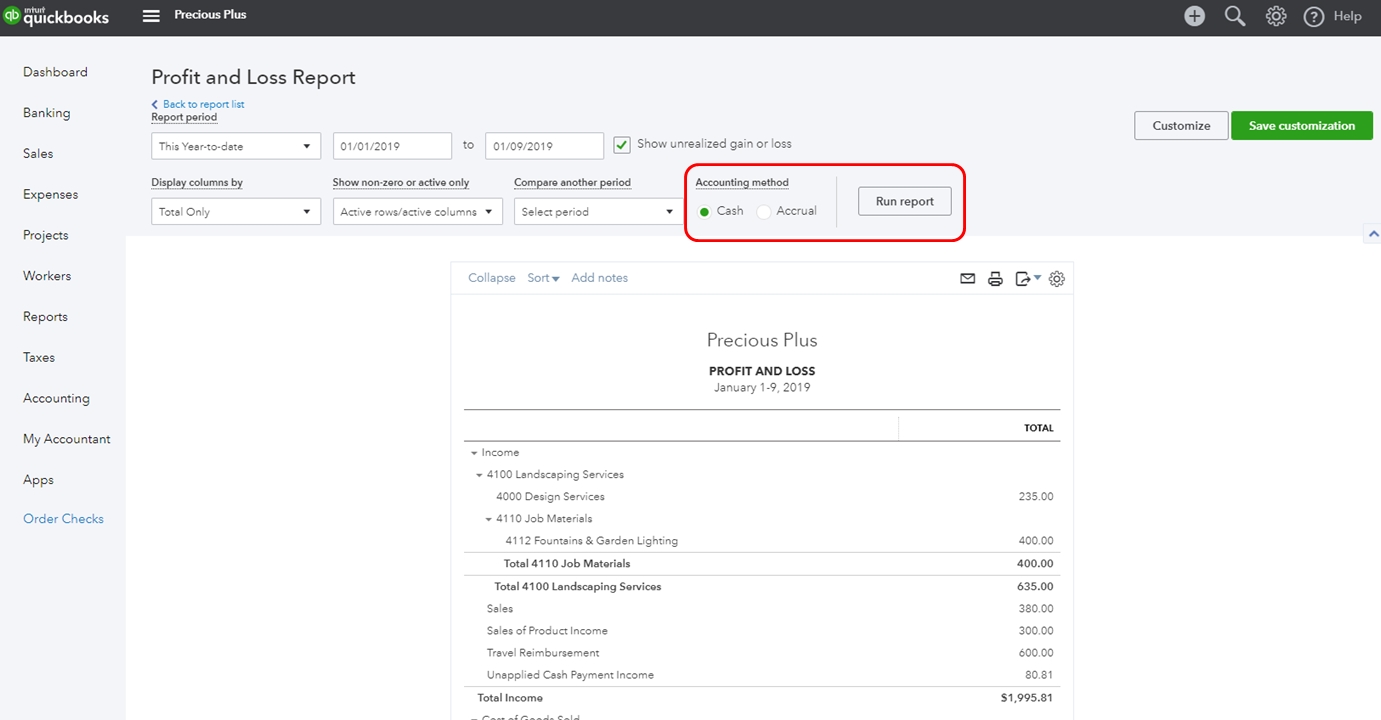

Finance
What Does Cr Mean On Credit Card
Published: October 25, 2023
Discover what "CR" means on your credit card and how it relates to finance. Get insights into the significance of CR in understanding your credit card transactions.
(Many of the links in this article redirect to a specific reviewed product. Your purchase of these products through affiliate links helps to generate commission for LiveWell, at no extra cost. Learn more)
Table of Contents
Introduction
When it comes to managing your finances, it’s important to understand all the terms and abbreviations associated with credit cards. One commonly used abbreviation you may come across is “CR,” which stands for “credit” or “credit received.” But what exactly does CR mean on a credit card statement? In this article, we will delve into the meaning of CR in credit card transactions and shed light on its significance.
In simple terms, CR on a credit card statement indicates that a credit has been applied to your account. This could be a refund, a cashback reward, or a credit adjustment due to a billing error or dispute resolution. Understanding the implications of CR on your credit card is crucial to managing your finances effectively and making informed decisions about your spending and budgeting.
In the following sections, we will explore the benefits and limitations of CR on credit cards, explain the CR process, provide guidance on how to check CR on your credit card statement, and highlight the importance of monitoring your CR transactions. We will also address some common questions related to CR on credit cards to further enhance your understanding.
By the end of this article, you will have a clear grasp of what CR means on a credit card and how it can impact your financial situation. So let’s dive in and unravel the mystery behind CR on credit card statements!
What is CR in Credit Card?
CR in credit cards refers to the abbreviation for “credit” or “credit received.” When you see CR on your credit card statement, it indicates that a credit has been applied to your account. Essentially, it means that money has been added to your credit card balance rather than deducted.
There are various reasons why a credit may appear on your credit card statement. It could be a refund from a merchant for a returned item, a cashback reward earned from using your credit card for certain purchases, or a credit adjustment due to a billing error or dispute resolution.
For example, let’s say you bought a faulty electronic gadget for $100 using your credit card and later returned it for a refund. In this case, you would see a CR of $100 in your credit card statement, indicating that the $100 has been credited back to your account.
Similarly, credit card companies offer rewards programs that allow you to earn cashback on specific categories of spending. These rewards are credited to your account as CR, which can be either applied towards your outstanding balance or redeemed for future purchases.
It’s important to note that CR on your credit card does not necessarily mean that you have an available credit balance. It simply indicates that a credit transaction has occurred. Your available credit depends on various factors, including your credit limit, outstanding balance, and any other charges or credits applied to your account.
Understanding the concept of CR on your credit card is crucial for managing your finances effectively. It helps you keep track of credits, refunds, and rewards, allowing you to make informed decisions about your spending and budgeting. By monitoring your CR transactions, you can ensure that you are being credited correctly and take advantage of any rewards or benefits offered by your credit card issuer.
Now that we have covered the basics of what CR means in relation to credit cards, let’s explore the benefits and limitations of CR transactions in the next section.
Benefits of CR on Credit Card
CR transactions on credit cards come with several benefits that can enhance your financial management and provide value to your overall credit card experience. Here are some key advantages of CR on credit cards:
- Refunds and Returns: One of the primary benefits of CR on a credit card is the ability to receive refunds for returned merchandise. If you decide to return a purchased item, the merchant will issue a credit transaction, resulting in a CR on your credit card statement. This allows you to recoup the funds spent on the item and have them applied back to your credit card balance.
- Cashback Rewards: Many credit cards offer cashback rewards on specific types of purchases. When you earn cashback, it is credited to your account as a CR. Accumulating cashback rewards over time can provide you with additional funds that you can use towards future purchases or to reduce your outstanding credit card balance.
- Error Corrections: In some cases, you may discover errors on your credit card statement, such as duplicate charges or incorrect billing amounts. When you report these issues to your credit card issuer, they will investigate and make corrections if necessary. The corrected amount will be credited to your account, resulting in a CR. This ensures that you’re not charged for any incorrect or unauthorized transactions.
- Budget Management: CR transactions can help you manage your budget more effectively. By tracking the CR amounts on your credit card statement, you can assess your spending patterns and identify areas where you can potentially save money. It also allows you to keep a record of any additional funds you have available from returns or rewards, enabling you to allocate them towards other financial goals or debt repayment.
- Flexibility and Convenience: With CR on your credit card, you have the flexibility to use the credited funds as you see fit. Whether it’s offsetting future purchases, paying down your balance, or saving the funds for a rainy day, the choice is yours. CR transactions provide the convenience of having immediate access to the credited funds, making it easier to navigate your financial obligations.
These benefits of CR on credit cards can contribute to a more positive financial experience by providing you with opportunities to save money, correct errors, and effectively manage your budget. Understanding and taking advantage of these benefits can lead to improved financial well-being and a more rewarding credit card usage.
In the next section, we will explore the limitations of CR on credit cards to give you a well-rounded understanding of its implications.
Limitations of CR on Credit Card
While CR transactions on credit cards come with several benefits, it’s important to be aware of the limitations associated with them. Understanding these limitations will help you make informed decisions and manage your credit card finances effectively. Here are some key limitations of CR on credit cards:
- Expiration and Restrictions: Some credits, such as cashback rewards, may have expiration dates or restrictions on their usage. If you don’t utilize your credited funds within the specified time frame or fail to adhere to the restrictions, you may lose out on the benefit. It’s essential to review the terms and conditions of any credits or rewards to ensure you maximize their value.
- Offsetting Outstanding Balances: While CR transactions can help reduce your outstanding credit card balance, they may not completely eliminate it. If you have a significant balance and a smaller credit is applied, you will still be responsible for paying the remaining balance. It’s important to consider the impact of CR transactions on your overall debt strategy and ensure you continue to make timely payments.
- Limited Applicability: Not all credit card transactions are eligible for credits or refunds. Some purchases, such as non-refundable hotel bookings or event tickets, may not be eligible for a CR. It’s vital to understand the specific terms and conditions of each transaction and familiarize yourself with the merchant’s refund policy before making a purchase.
- Potential Account Adjustments: In some cases, a credit card issuer may need to make adjustments to your account that result in a CR. For example, if there is a billing error or a dispute resolution, the issuer may temporarily credit your account until the matter is resolved. However, this can also lead to temporary changes in your available credit balance until the adjustment is finalized.
- Impact on Credit Utilization: Credit utilization is an important factor that affects your credit score. While CR transactions can reduce your outstanding balance, they may not directly impact your credit utilization ratio. This ratio is calculated by dividing your credit card balance by your credit limit, and lower utilization is generally viewed positively. It’s essential to consider how CR transactions may or may not impact your overall credit utilization when managing your credit card finances.
Being aware of these limitations allows you to navigate your credit card transactions more effectively and make informed decisions. By understanding the potential constraints of CR on credit cards, you can set realistic expectations and optimize your financial strategies.
In the next section, we will delve into the process of understanding CR on your credit card and how to check it on your statement.
Understanding the CR Process
Understanding the CR process on your credit card involves familiarizing yourself with how credit transactions are applied and reflected on your statement. Here are the key steps to understanding the CR process:
- Credit Transactions: As mentioned earlier, CR on your credit card statement indicates that a credit transaction has been applied to your account. This could be a refund, a cashback reward, or a credit adjustment due to a billing error or dispute resolution.
- Date and Amount: The credit transaction will have a specific date and corresponding amount. This information allows you to track when the credit was applied and the exact value of the credit received.
- Statement Balance Adjustment: When a credit transaction is applied to your account, it typically adjusts your statement balance. This means that the credited amount is subtracted from your outstanding balance, resulting in a lower total balance for that billing cycle. It’s important to review your statement to see how the CR affects your overall balance.
- Available Credit: While the CR reduces your outstanding balance, it’s essential to understand that it may not directly impact your available credit. Your available credit is determined by your credit limit minus your outstanding balance. If you have a significant outstanding balance, even with a CR, your available credit may still be limited.
- Reconciliation: Regularly reviewing and reconciling your credit card statements is crucial for understanding the CR process. By comparing your transactions, credits, and balances, you can ensure that your credits have been accurately applied and identify any discrepancies or errors that require further investigation.
By understanding the CR process on your credit card, you can track and monitor your credits accurately. This knowledge allows you to effectively manage your finances, make informed decisions about your spending, and identify any discrepancies that may require attention.
In the next section, we’ll explore how you can check the CR transactions on your credit card statement.
How to Check CR on Credit Card Statement
Checking the CR transactions on your credit card statement is a straightforward process that helps you stay informed about the credits applied to your account. Here’s how you can check CR on your credit card statement:
- Access Your Statement: Start by accessing your credit card statement. This can typically be done through your credit card issuer’s online banking portal or by receiving a paper statement in the mail.
- Review the Transaction List: Look for the section of your statement that lists the transactions. This section will display the details of all the purchases, payments, and credits applied to your account during the billing cycle.
- Identify CR Entries: While reviewing the transaction list, look for entries that contain the abbreviation “CR” or any indication of credit transactions. These entries will represent the credits applied to your account, such as refunds, cashback rewards, or credit adjustments.
- Check Date and Amount: Once you have identified the CR entries, carefully review the date and corresponding amount of each credit transaction. This will help you confirm that the credits have been accurately applied to your account.
- Verify Statement Balance Adjustment: As you review the credit transactions, ensure that they have appropriately affected your statement balance. The credited amounts should be subtracted from your outstanding balance, leading to a reduced total balance for that billing cycle.
- Compare with Previous Statements: To track changes in your credits over time, compare the CR transactions on the current statement with those on previous statements. This will allow you to gauge the consistency of the credits and identify any discrepancies or missing credits that may require attention.
By following these steps, you can effectively check the CR transactions on your credit card statement. This process helps you stay informed about the credits applied to your account, ensures the accuracy of your statements, and allows you to track your financial transactions.
In the next section, we will discuss the importance of monitoring CR on your credit card and the benefits it provides.
Importance of Monitoring CR on Credit Card
Monitoring CR transactions on your credit card is of utmost importance for several reasons. Here are the key reasons why it is crucial to keep a close eye on the CR activity on your credit card:
- Accuracy: Monitoring your CR transactions allows you to ensure the accuracy of your credit card statements. By regularly checking for any discrepancies or errors, you can identify and address them promptly. This helps maintain the integrity of your financial records and prevents any undue charges or incorrect balances.
- Fraud Detection: Fraudulent activity on credit cards is unfortunately common in today’s digital world. By monitoring your CR transactions, you can quickly detect any unauthorized credits that may indicate fraudulent activity. If you notice any unfamiliar or suspicious credits, you can take immediate action by contacting your credit card issuer and reporting the potential fraud.
- Maximizing Rewards: CR transactions, such as cashback rewards, provide an opportunity to maximize the benefits of your credit card. By monitoring your CR activity, you can keep track of the rewards you’ve earned and ensure that they are correctly applied to your account. This allows you to take full advantage of the rewards program and make the most of the benefits offered by your credit card issuer.
- Budgeting and Financial Planning: Monitoring your CR transactions helps with budgeting and financial planning. By keeping track of the credits you receive, you can accurately assess your overall financial situation. This information allows you to make informed decisions about your spending habits, set realistic financial goals, and allocate any credited funds towards debt repayment or savings.
- Dispute Resolution: In the event of a billing error or a dispute with a merchant, monitoring your CR transactions becomes crucial. By reviewing your statements and tracking the credits applied, you can ensure that any disputed charges are appropriately resolved, and the necessary adjustments are made to your account. This helps protect your rights as a consumer and maintains the accuracy of your credit card records.
Regularly monitoring the CR transactions on your credit card empowers you to maintain accurate financial records, detect and prevent fraud, optimize the benefits of your credit card rewards, and make informed decisions about your budgeting and financial planning. It also provides you with the necessary information to effectively resolve any billing disputes and maintain your financial well-being.
In the next section, we will address some common questions related to CR on credit cards to further enhance your understanding.
Common Questions about CR on Credit Card
As you delve into the world of credit cards and explore the concept of CR, you may have some questions that require clarification. Here are some common questions about CR on credit cards:
- 1. Do all credit cards offer CR transactions?
- 2. Are there any fees associated with CR transactions?
- 3. Can I use CR to pay my credit card bill?
- 4. How long does it take for a CR to appear on my credit card statement?
- 5. Can I dispute a CR transaction?
No, not all credit cards offer CR transactions. The availability of CR depends on the terms and conditions set by your credit card issuer. Many credit cards do provide benefits such as cashback rewards or refund options, which involve CR transactions, but it’s important to review the specific features of your credit card to understand what types of CR may be available to you.
In most cases, there are no fees associated with receiving CR transactions. However, it’s crucial to review the terms and conditions of your credit card to ensure there are no unexpected charges or fees related to specific types of CR activity, such as cashback redemption fees or return processing fees.
Yes, in many cases, you can use CR to pay your credit card bill. When you have a credit balance, you can contact your credit card issuer to discuss the options available to you. They may allow you to apply the credit towards your outstanding balance or request a refund of the credited amount.
The time it takes for a CR to appear on your credit card statement can vary depending on the specific circumstances. In some cases, it can be processed and reflected on your statement within a few days, while in other situations, it may take a couple of billing cycles. If you have concerns about the timing of a specific CR, it’s best to reach out to your credit card issuer for more information.
Yes, like any other credit card transaction, you have the right to dispute a CR transaction if you believe it is incorrect or unauthorized. If you notice any discrepancies or unfamiliar credits, contact your credit card issuer immediately to initiate the dispute resolution process. They will guide you through the necessary steps to investigate and resolve the issue.
These are just a few common questions about CR on credit cards. It’s important to remember that each credit card issuer may have different policies and procedures regarding CR transactions, so it’s advisable to review the terms and conditions specific to your credit card for more detailed information.
Now that we have addressed these common questions, let’s conclude our discussion.
Conclusion
Understanding the meaning and significance of CR on a credit card statement is crucial for effectively managing your finances and making informed decisions about your spending. CR transactions, which indicate credits applied to your account, can range from refunds and cashback rewards to credit adjustments due to billing errors or dispute resolutions.
By monitoring your CR transactions, you can ensure the accuracy of your credit card statements, detect any fraudulent activity, and take full advantage of the benefits offered by your credit card issuer. Monitoring CR activity also allows you to track your financial progress, make informed budgeting decisions, and resolve any billing disputes that may arise.
Remember to review your credit card statements regularly to identify CR entries, verify the amounts and dates of the credits, and reconcile them with your overall balances. This helps you stay on top of your finances, maximize your rewards, and maintain accurate financial records.
Additionally, understanding the limitations of CR on credit cards, such as expiration dates or restrictions on usage, is essential for optimizing your credit card benefits and avoiding any unforeseen challenges.
By gaining a clear understanding of CR on credit cards, you can confidently navigate your financial transactions, make the most of your credit card rewards, and stay in control of your financial well-being.
So, whether it’s checking for a refund, earning cashback rewards, or resolving billing discrepancies, don’t overlook the importance of CR on your credit card statement. Stay vigilant, monitor your CR transactions, and leverage the benefits they offer to make the most of your credit card experience.














